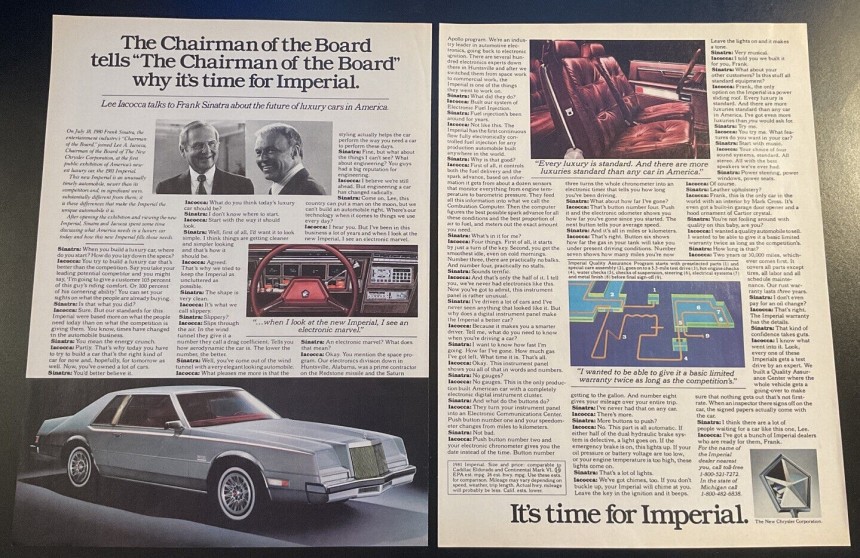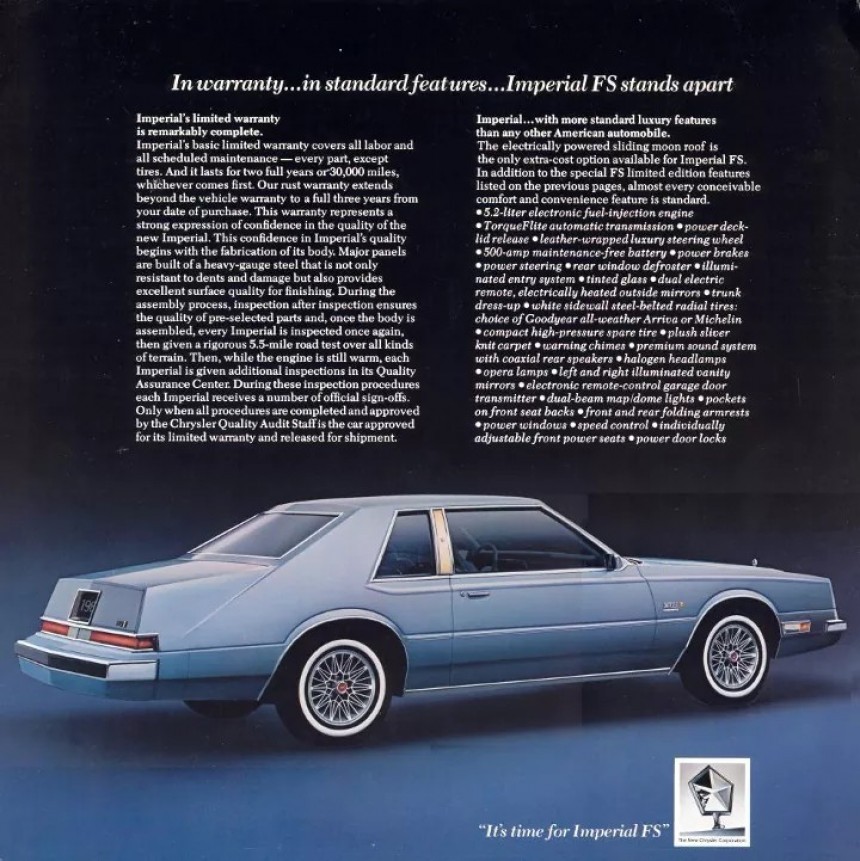Imperial lasted from its inception in 1926 until 1975, first as a model, then as a stand-alone division of Chrysler Corporation (from 1955). In the mid-seventies, the imperial symbol of American automotive greatness was axed. Mopar was sailing some rough financial waters, and the low-volume-selling Imperial was among the victims of budget-saving measures.
It didn’t help much – Chrysler wasn’t doing any better toward the end of the Malaise decade when Henry Ford II fired Lee Iacocca. That happened in July 1978, and Chrysler saw an opportunity and took it – appointing the father of the Mustang as CEO.
Eventually, it paid out – Mopar came back on track a few years later. But before the recovery (which involved a federally guaranteed loan of $1.5 billion, cutting labor costs by $3/hour, and some very successful products like the minivan), Iacocca rolled out a bold project. Ultimately, it failed - a spectacular miss of Hollywoodian proportions.



 www.autoevolution.com
www.autoevolution.com
It didn’t help much – Chrysler wasn’t doing any better toward the end of the Malaise decade when Henry Ford II fired Lee Iacocca. That happened in July 1978, and Chrysler saw an opportunity and took it – appointing the father of the Mustang as CEO.
Eventually, it paid out – Mopar came back on track a few years later. But before the recovery (which involved a federally guaranteed loan of $1.5 billion, cutting labor costs by $3/hour, and some very successful products like the minivan), Iacocca rolled out a bold project. Ultimately, it failed - a spectacular miss of Hollywoodian proportions.



Space Tech Stopped Frank Sinatra From Making Chrysler's Last Imperial a Sales Hit
Mopar’s last call for the luxury brand was a personal luxury car from the early 80s with a special Frank Sinatra edition; electronic technology ruined the deal
